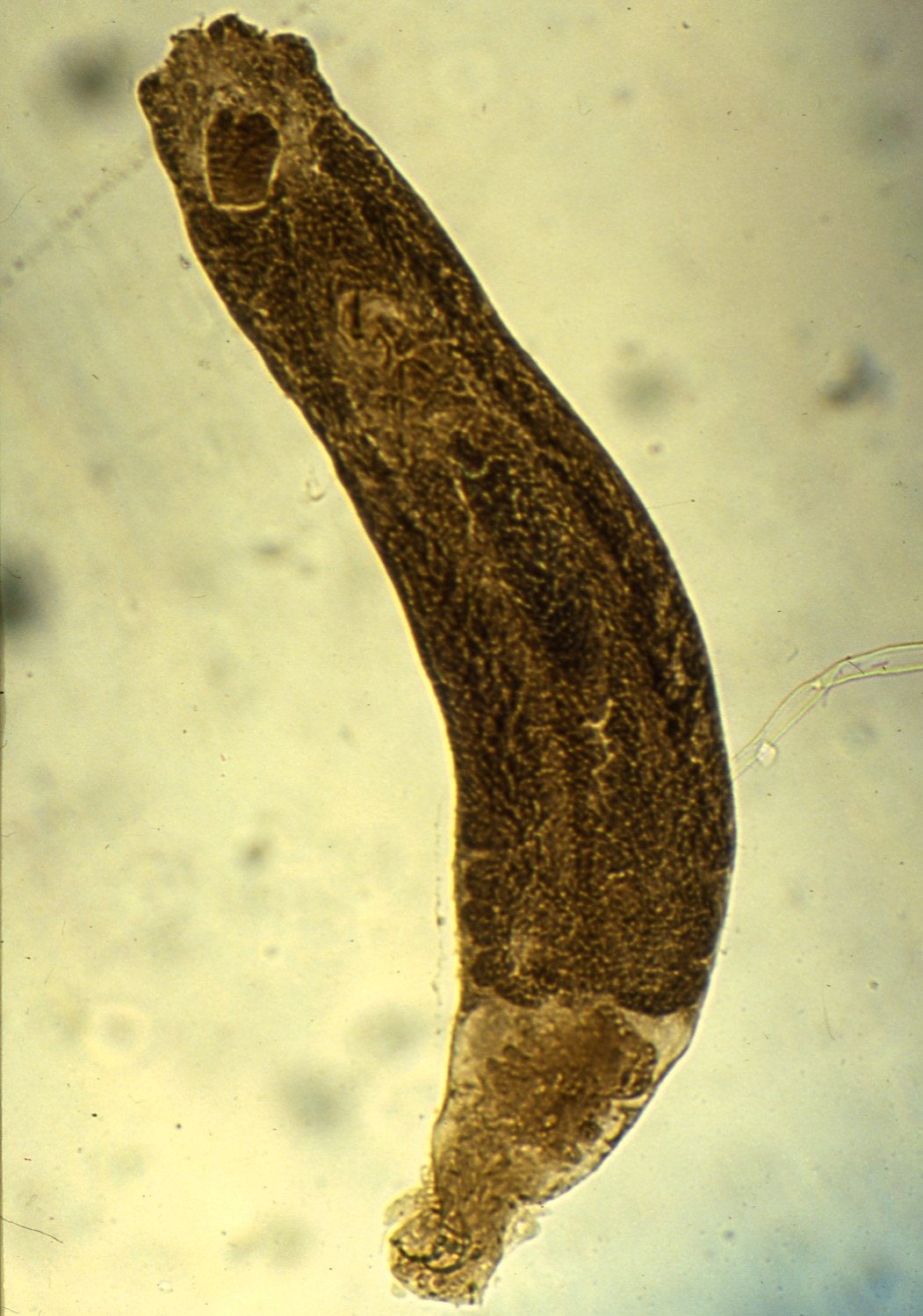
| Parasite | Dactylogyrus spp. |
|---|---|
| Taxonomy | Plathyhelminthes, Monogenea, Monopisthocotylea |
| Hosts | Common carp (Cyprinus carpio) |
| Infection site | Gill |
| Clinical signs | Infected fish exhibits no external abnormality. Excessive mucus was secreted in the gill (Fig. 1). |
| Parasitology | Well-known Dactylogyrus are D. extensus (length, ca. 1-2 mm) and D. minutes (ca. 0.5 mm) in Japan, while D. vastator (ca. 1.2 mm) in Europe. The parasite has 2 eyespots at the anterior end and attaches to the host by a haptor with 2 pairs of anchors, one connecting bar and 7 pairs of marginal hooks at the posterior end (Fig. 2). A hatched larva deciliates and settles on thegill within a day. Parasite feeds on the epithelial tissues of the gill filaments and mature (in a week during summer) to spawn. |
| Pathology | Hyperplasia of the gill tissues is observed in the lesion. Thereafter, the gill filaments become clubbing following to the fusion of the gill lamellae. Mortality of infected fish occurs due to the impairment of the respiration system (Ogawa, 2004). |
| Health hazard | Since this parasite is not infectious to human, it is harmless in food hygiene. |
| Diagnosis | Observe the morphology of the adult parasite in a flattened preparation. Dactylogyrus inversus, a parasite of Japanese sea bass Lateolabrax japonicus, is differentiated from other Dactylogyrus by its large body (up to 2.5 mm) and morphology of the marginal hooks. |
| Other information | Parasite is effectively removed by 0.3-0.5 ppm trichlorfon treatment. In addition, drying of the ponds before the introduction of new fish is recommended for killing the parasite eggs (Ogawa, 2004). |
| References | Ogawa, K. (2004): Monogenean diseases. Infectious and parasitic diseases
of fish and shellfish. (eds. by Wakabayashi, H. and K. Muroga), Koseisha Koseikaku, pp.353-379. (In Japanese) |


(Photos by K. Ogawa)
Fig. 2. Adult worm of D. extensus
Fig. 1. Gill of common carp parasitized by Dactylogyrus.